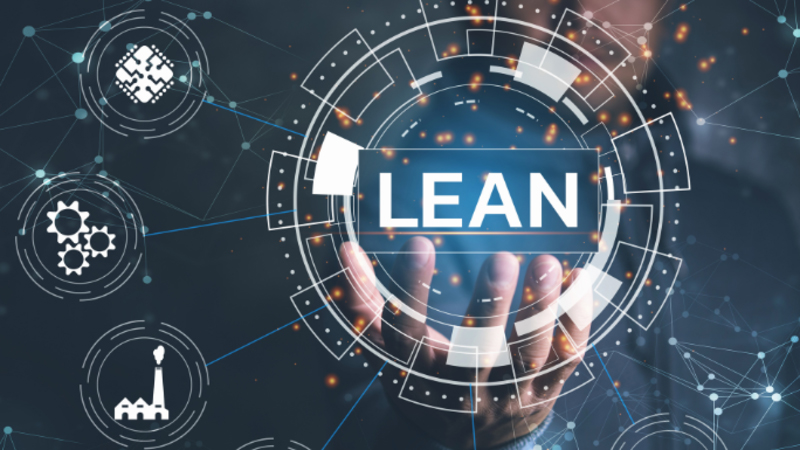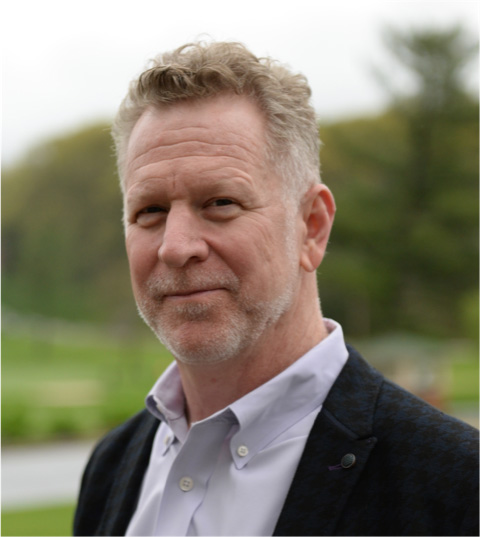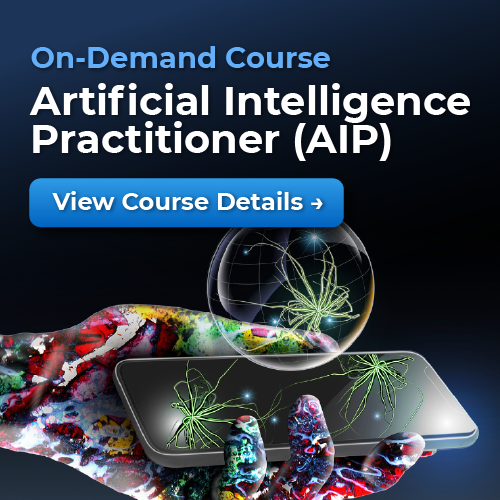By Alan Zucker
April 24, 2024
Agile is a mindset described by a set of values and principles. It traces its roots to Lean, which is also foundational to other modern management theories. Lean’s primary focus is delivering value quickly and eliminating waste.
Toyota was a Lean pioneer. Out of necessity, it needed to be very efficient to compete. It dramatically decreased the cost of rework by building quality into every process step. It developed the just-in-time delivery model, which freed up working capital. These practices are now universal.
Lean is a set of principles. The “House of Lean” is often used as a metaphor. The roof is Value. The base is Leadership, Systems Thinking, and Process Integrity. Respect for People, Transparency, Flow, and Continuous Improvement are the pillars.
Lean is industry-agnostic and offers insight into agility. In this article, I explore these principles to demonstrate that any organization can apply them to improve its “way of working.”

Value
Value is the roof of our House of Lean. Customers consume the products and services created by the enterprise. All organizations should strive to deliver value to their internal and external customers.
So, what is value? Our customers define value.
What makes them happy? What are they willing to pay for? What differentiates us from our competitors or alternatives?
Companies innovate and develop new products. But customers validate those innovations by “voting with their wallets.”
Great companies pivot without mercy or guilt. They learn from their customers and continually innovate. They quickly abandon “bad” ideas and pursue valuable ones.
Leadership
Leaders play a critical role and appear at every level in the organization. They define the culture, vision, and strategies. They ensure alignment between what the organization values and does.
A primary leadership role in establishing the organization’s vision and strategy. Creating alignment between the strategy and the work performed ensures that resources are optimized to support the common, shared objectives.
Culture is an outcome of the leaders’ behaviors. Great leaders demonstrate authenticity and integrity in their actions. People mirror these behaviors.
Emotional intelligence and empathy are predictors of organizational performance. Data shows that self-aware leaders create positive environments. Their teams are more productive, creative, and innovative.
Systems Thinking
Systems thinking recognizes that everything we do is part of a bigger whole. If we want to improve, we must fix the entire process rather than optimize component parts.
Picture a series of connected hourglasses with different-sized necks. The narrowest neck dictates how quickly the sand can go from the top to the bottom. The same holds true for work—the slowest step in the process dictates the pace of delivery.
Value streams describe how products and services are delivered. They begin with the customers’ requests and end with fulfilling their needs. The value flows through the connection points. Waiting, hand-offs and unnecessary work are all forms of waste.
Recall a recent customer service call. How many times were you transferred? How long did you wait? How often did you repeat your problem? The answer to these questions was probably, “too many, too long, too often.” Sadly, few organizations employ systems thinking.
Process Integrity
Process integrity is delivering products of the highest possible quality. Quality is created through processes, systems, and, most importantly, culture.
Establishing and enforcing quality standards at each step in the process results in higher quality at a lower overall cost. It does not matter if you are building a car, constructing a building, or writing a report. The longer it takes to find and fix a problem, the more it costs.
“Inch by inch, it’s a cinch. Yard by yard, it is hard.” The adage applies to everything we do. It is easier to prove one page than a chapter, let alone an entire book.
How we measure performance creates incentives and drives actions. As Drucker says, “what gets measured, gets done.” Leading organizations align their values with their actions. Zappos, Nordstroms, and Ritz Carlton Hotels are infamous for creating epic customer-centric cultures. Zappos does not track the length of a call—a celebrated one lasted over 10 hours.
Nordstroms legendarily accepted the return of tires which it does not even sell.
A relentless pursuit of quality means people are empowered to “stop the line.” Toyota created a culture where ordinary employees could halt the production line to fix a problem. That is a bold commitment.
Respect for People
Only humans can organize to create monumental achievements. How we manage and lead defines the organization. Culture drives our success. As Drucker said, “culture eats strategy for breakfast.”
We achieve greatness by creating an environment where people feel they matter. Their ideas and opinions count. There is diversity. Their voices are heard.
In high-performing organizations, everyone is empowered. They innovate and create. They take pride in their work. And the organization benefits.
Dysfunctional organizations are the opposite. People do what they are told. Independent thought, innovation, and creativity are discouraged.
We also want to recognize that our people, partners, and customers are essential to our success. We need to build long-lasting and trusting relationships. These relationships allow us to focus our attention on delivering value.
Transparency
Transparency is a core Lean-Agile principle. Agile teams use information radiators to produce radical visibility into backlogs, risks, and status through Kanban boards. Transparency creates accountability and opens the opportunity for collaboration.
The Kanban board is a primary tool for creating transparency. It was initially designed to manage the flow of parts and inventory in factories. It has been successfully adopted to knowledge work. Kanban is also entering the classroom to help students focus on their assignments.
Gemba is another form of transparency. Gemba means “go out and see.” If we want to understand what is happening, we need to go to where the work is being performed, observe, and talk to the people doing the work. It is always very illuminating.
Flow
Flow delivers value consistently, quickly, and predictably. To achieve flow, we:
- Reduce batch-size. Smaller batches of work get finished sooner
- Make work small. We can reduce variability and increase predictability by delivering smaller increments.
- Reduce work-in-progress (WIP). The fewer the number of things we are working on at one time, the faster things are completed. We lose 20-80% of efficiency when we task switch.
Continuous Improvement
Continuous improvement is foundational to all modern management frameworks. Kaizen is Japanese for “small change for good” and embodies this principle.
The 12th Agile Principle embraces continuous improvement. At regular intervals, teams review their performance and identify ways to improve. These ideas are added to the backlog, ensuring they are implemented.
Those closest to work are empowered to solve their problems. Management should ensure that people have the training and tools to analyze the process, identify root causes, and implement solutions.
To learn more about Agile Beyond IT…
I partnered with Velociteach to create a 4-hour online course on applying Agile practices to all organizational challenges. Use the promo code: Alan20.
© 2022, Alan Zucker; Project Management Essentials, LLC
Lean Thinking is foundational to Agile. In this series, I share how Agile thinking and practices can be to nearly every industry.
Read the article: https://pmessentials.us/agile-beyond-it-lean-thinking/
If you are interested in learning more about applying Agile to non-technology domains, check out my new course. Agile Beyond IT: https://www.velociteach.com/online-courses/agile-beyond-it/
Alan Zucker has over 25 years of experience leading projects and project management organizations in Fortune 100 companies. In 2016, Alan founded Project Management Essentials to share his passion for and experience in project management, leadership, and Agile.
Alan is a frequent keynote speaker and thought leader. He authors monthly articles, is regularly quoted in the industry press, and is a podcast guest. He is an adjunct faculty member at George Mason University and the University of Georgia; and is a senior instructor with several national, professional development organizations.
Alan has a master’s degree in economics from the University of Maryland and a master’s and a certificate in IT Project Management from the George Washington University. He is a Project Management Professional (PMP) and Certified Agile Professional (PMI-ACP) through the Project Management Institute. He also holds multiple Agile certifications from Disciplined Agile, Scrum Alliance, and Scaled Agile.
Visit Alan’s social media links to learn more.
Website: https://pmessentials.us
LinkedIn: https://www.linkedin.com/in/alanizucker/
Twitter: Alan @pmessentials_us
Disclaimer: The ideas, views, and opinions expressed in this article are those of the author(s) and do not necessarily reflect the views of International Institute for Learning or any entities they represent.






